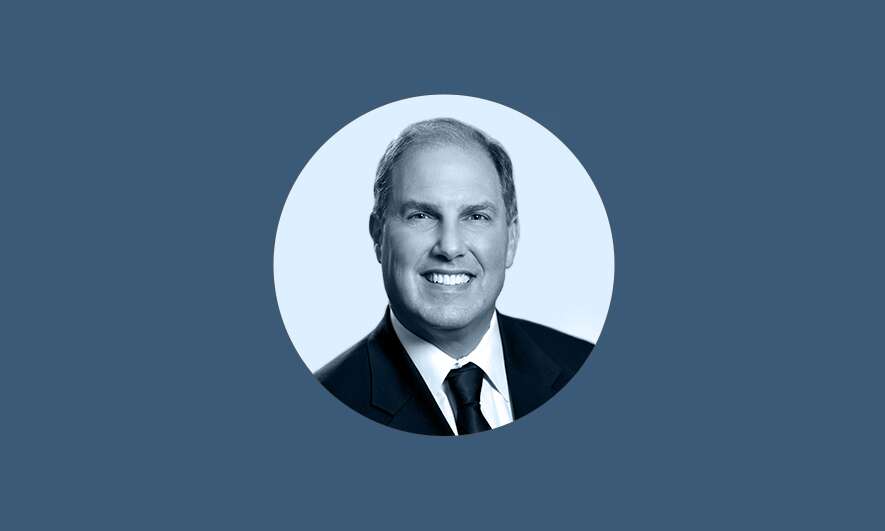A new subvariant of the omicron strain, BA.5, isn’t just causing a spike in illnesses and hospitalizations in the U.S., it’s also creating challenges for employers at a time where many were hoping for relief from COVID-19.
And in the U.S., BA.5 is now the dominant strain. Since April 2022, the percentage of cases due to the BA.5 subvariant have been growing.1 In June and July 2022, BA.5 displaced the previous dominant strain in the U.S., which was the BA.2.12.1 subvariant.2
Rising positivity rates and the spread of the omicron variant and subvariants are causing employers to review their return to office plans and possibly make changes to their strategy.
As businesses continue to monitor the COVID-19 pandemic and adjust to a new normal, they’ll have to work through challenges brought on by the omicron variant and subvariants, as well as the possibility of a more dominant strain on the horizon.
“Being in the third year of the pandemic and a new subvariant causing a rise in positivity rates, it’s clear that COVID-19 is unpredictable and causing a multitude of challenges for businesses,” said The Hartford’s Chief Medical Officer Dr. Adam L. Seidner. “A successful return to office means continuously monitoring the pandemic to ensure employee safety. And it’s essential for this strategy to be fluid because plans can change if numbers increase or a new variant or subvariant gets discovered.”
Omicron Variant vs. Delta Variant
After its initial detection in December 2021 in the U.S., it took weeks for the omicron variant to become the dominant strain in the country.3 That’s a staggering detail considering omicron only represented less than 1% of COVID-19 cases in the beginning of December.4
Due to its mutations, the omicron variant spreads more easily than the initial COVID-19 strain and the delta variant. And early research seems to show the omicron subvariants BA.4 and BA.5 can cause infections, despite a vaccine, booster or previous illness.
Symptoms for people infected with the omicron variant are typically less severe than the delta variant. While still early, the same seems to be true for BA.5.
Vaccines, Booster Shots and Omicron
Officials have long said a vaccine and booster are the best ways to protect against COVID-19, and the same remains true for the omicron subvariants, Seidner said.
As of July 2022, over 222.68 million people in the U.S. are fully vaccinated.5 About 107 million people have their first booster shot and about 18 million people have their second booster shot.6
Currently, only U.S. adults 50 and up and certain people with a weak immune system are eligible for a second booster.7 However, the Food and Drug Administration is determining whether those under 50 years old can receive a second booster.8
“Getting vaccinated and a booster is still the most effective way to protect yourself from COVID-19 and its subvariants,” Seidner said. “The vaccine can help prevent you from getting moderate to severe COVID-19.”
Seidner noted that how long it’s been since a person got their vaccine plays a part in how protected they are. A study found one vaccine dose is 52% effective in preventing hospitalization from omicron.9 With two doses, efficacy increased to 72%.10 However, after 25 weeks, the two-dose vaccine efficacy reduces to 52%.11
But BA.5 can evade immune protection from vaccination. One study found that it’s over four times more resistant to vaccines, which means it’s “more likely to lead to vaccine breakthrough infections.”12
What To Consider When Reopening Offices
As effective as the vaccines and boosters can be against COVID-19, employers have a lot to consider as they reopen their offices. Before you welcome back employees, you need to have a plan in place that helps resolve all the issues you’ll be facing – from workers that don’t get vaccinated to the mental health impacts that people are facing from the ongoing pandemic.
In July 2021, The Hartford hosted a panel discussion on “Adjusting to the New Normal After the Pandemic.” Panelists included:
- Dr. Michael Lacroix, medical director at The Hartford
- Wendy J. Mellk, principal at Jackson Lewis P.C.
- Dr. Adam L. Seidner, chief medical officer at The Hartford
The panelists provided information on the health and legal risks that employers may face when reopening, as well as how to help employees who may be heading back to the office.
Preventing Employment-Related Lawsuits
Since the start of the pandemic, there’s been more than 5,600 employment-related lawsuits due to COVID-19.13 And Mellk said she expects to see more pandemic-related claims.
Some of the most common lawsuits filed are related to leave or employee discrimination. In fact, nearly 49% of cases filed between Jan. 30, 2020 and Jan. 5, 2022 claim at least one of the following:
- Employment discrimination
- Remote work conflicts
- Leave conflicts
Because it’s expected that pandemic-related lawsuits will increase, Mellk emphasized that companies need to do their due diligence, keep proper documentation and comply with Equal Employment Opportunity (EEO) laws.
“If you’re going to let an employee go, did that employee raise a concern with the health and safety plan in the workplace?” Mellk said, implying that the discharged employee potentially could have a retaliation or whistleblower claim in certain jurisdictions.
Can Employers Mandate the COVID-19 Vaccine?
Companies in different industries have recently announced vaccine mandates for employees returning to work.13
Mellk explained that under EEO laws, employers can require employees who enter the workplace to get vaccinated. But she added that businesses have to offer reasonable accommodations to employees who don’t get the vaccine because of disabilities, religious beliefs or pregnancies.
If you decide to mandate vaccines for employees going back to work, Mellk emphasized the importance of doing your due diligence because it can open your business to legal risks.
“Because some individual groups may face greater barriers to receiving the vaccine, you want to consider whether the mandated vaccine policy will disparately or disproportionately exclude employees based on a protected category,” she explained.
Mellk also noted that employers should be aware of local laws and regulations. In Montana, for example, the state doesn’t allow businesses to discriminate based on a person’s vaccine status or having the immunity passport. And similar bills may pass in other states.
Vaccine policies should show how your business plans to protect both vaccinated and unvaccinated employees, we well as clearly explaining how workers can request an exemption or accommodation.
“A well-received accommodation policy could help increase the likelihood of success if you have to defend a lawsuit,” Mellk said.
How Do Employers Handle Vaccinated and Unvaccinated Workers?
Unless every employee voluntarily discloses that they’ve received a vaccine, Seidner acknowledged that it would be difficult to know who got vaccinated.
If any of your employees are hesitant about getting the COVID-19 vaccine, Seidner said providing education and communication is key. The CDC says there are many factors behind why someone doesn’t get vaccinated but that confidence in the vaccines, the vaccinator and the system all support the decision to get a vaccine.14
You can get resources and key messages from the CDC to help build vaccine confidence among your employees.
Be aware that the CDC has updated its quarantine and isolation recommendations over time for fully vaccinated people. It’s a good idea to check the CDC for the most recent guidelines for vaccinated people.
Look Into a Phased Approach for Returning to Work
As employers think about work in a post-COVID-19 world, many continue to question the best way to bring workers back to the office. Honestly, there’s not an easy answer. Every company is unique, so plans for returning to work during the pandemic are specific to each business.
If your workforce is currently working from home, bringing every worker back at the same time can be dangerous. Doing so can lead to increased transmission and positive cases. Instead, a gradual return to work plan gives you the opportunity to make adjustments if issues come up.
What is a gradual return to work plan? It includes multiple phases or waves of employees returning to the office. And it’ll require employers to redefine how their business offices run, Seidner noted. The pandemic caused a fundamental change in how offices work.
For example, employees may only be able to use the escalators to go up. If they want to go down, they may have to take the stairs to ensure there’s social distancing between employees. Employers may also need to develop a plan for the cafeteria, which can include:
- New hours of operation
- One-way traffic flow
- Encouraging the use of contactless payments
“Anything in the office space – whether it’s equipment, computers or ways to get around the building and campus – needs to be considered when bringing employees back to work,” Seidner said.
It’s imperative that you and your legal team review your business’ return to work plan and policies to make sure they comply with EEO laws.
For example, if you’re deciding which employees will return to the office versus remain working remotely, it’s important that your business makes “legitimate non-discriminatory decisions” related to who’s returning to work, Mellk said.
“It’s important that employers be able to back up their decisions regarding the selection of who will return to the workplace with legitimate business reasons,” she explained.
Does a Surgical Mask Help Avoid COVID-19?
Wearing a mask can help stop the spread of COVID-19. While a surgical mask can help prevent the spread of infectious particles, there are better options to use, Seidner said. He suggests using a N95 or KN95, which filters up to 95% of harmful particles in the air.
If these type of masks aren’t available, Seidner recommended double masking as a way to protect against the spread of the omicron variant and subvariants.
Monitor Data and Trends Before, During and After Employees Return to Office
An essential piece to a successful return to work plan is monitoring data and trends.
Before you bring your employees back to work, Seidner suggests looking at the trends within your community. Paying attention to the positive cases and the number of tests administered can give you an idea of how your local community is handling COVID-19.
“Look at metrics that are both internal and external to the workplace, like hospitalizations, ICU numbers and case fatality rates. You’ll see if there’s a spike or peak in your area,” Seidner explained. “It’s crucial for employers to track this data and communicate with their employees, providing education and resources for them to use.”
Data tracking doesn’t stop after you let employees return to work, though. In fact, Seidner emphasized that employers should use data to help make decisions related to their return-to-work plan. You can use the data to help you decide when it’s a good time to move to the next phase of your plan. If you find there are few positive cases as employees come back to the office, it doesn’t mean you have to panic.
“You wouldn’t need to roll back to an earlier phase even if you had a case or two,” Seidner explained. “Unless you have a whole population sick, there’s no need to do that. Instead, keep what’s in place and slow down the number of employees returning to the office.”
Once there haven’t been any outbreaks or spikes for a month, Seidner said it’s a good sign that an employer can move onto the next phase of their return-to-work plan.
Pay Attention to Employees’ Psychological and Behavioral Issues
Working virtually for an extended period of time, combined with local restrictions and ongoing news of the pandemic, can deeply affect a person. In February 2021, the Kaiser Family Foundation (KFF) conducted a survey to look at the impact COVID-19 had on mental health.
The organization found that 4 in 10 adults in the U.S. reported symptoms of anxiety or depressive disorder.15 This is an increase from the 1 in 10 adults that reported these symptoms from January to June 2019 – about a year before the pandemic.16
The KFF’s survey may not be surprising to some. Researchers have studied and consistently found that social isolation and loneliness were linked to worsening cardiovascular and mental health outcomes.17
Lacroix pointed out that the workers coming back to the office aren’t the same workers as pre-pandemic.
“The rates of depression, anxiety, stress and grief – your employees have been carrying all of that,” Lacroix explained.
Seidner recommended that employers can work with their HR department to create a plan to help employees feel at ease. One idea is to offer an Employee Assistance Program (EAP). This gives employees access to services to help them with personal or work-related problems.
It’s also imperative for supervisors and managers to have training on how to recognize if a worker is struggling. A slip in performance may occur shortly after an employee returns to work, so managers need to be comfortable with having a conversation to understand what’s going on.
Make sure managers know about resources and services that can help employees. Encourage them to make the initial connection between the service and the employee, Seidner said.
“I call it a warm handoff,” Seidner explained. “Instead of having a manager or supervisor telling their employee that they should call this number or use this service, help them make the connection. Don’t just say, ‘Do this’ and walk away.”
Foster a Stigma-Free Culture in the Workplace
In The Hartford’s Future of Benefits study, employers identified mental health as a significant workplace issue. One of the studies revealed a disconnect between employers and employees and showed that 33% of employees left their jobs to seek a better workplace culture. Earlier studies found 72% of HR professionals reported stigma as a barrier to treatment.
That’s why it’s important to create and foster a stigma-free culture in the workplace so employees who need mental health treatment feel comfortable getting the assistance they need.
In an episode of The Hartford’s “Line on Leave” podcast, Dr. Christine Crawford, a psychiatrist at the National Alliance on Mental Health (NAMI), said stigma stands in the way of people feeling comfortable and talking openly about what they’re experiencing. The language that employers use, she noted, can go a long way in not stigmatizing someone and making workers feel comfortable and ultimately accepted.
“Empathy is so important. And it’s something that a lot of people think they understand what it means, but they don’t really have a clear understanding about it,” Crawford explained on the podcast. “When I think about empathy…this is so key to reduce some of the stigma and to make people feel like they’re not going to be negatively judged by other folks.”
Looking Ahead After the Pandemic
Although employers and employees had to face various challenges in the last two years, there are lessons learned that companies can apply to help reduce the impact that another pandemic may have.
“Infectious diseases are out there – they always have been out there and they’re here to stay,” Seidner said during the panel. “We need to embrace universal source controls to keep COVID-19 outside. Cleaning, sanitation and the hybrid work model is here to stay.”
Creating a tool kit can help employers stay prepared. It will help “allow them to nimbly move back to remote work and have safety measures in place” if there’s another infectious disease event, Mellk explained. She noted New York’s HERO Act can give employers a roadmap to help create a plan to respond to the next event. The law requires employers to have a plan for managing an outbreak, including:
- Employee health screenings
- Personal protective equipment, mask use and physical distancing
- Disinfection protocols
“I think it gives employers a really good outline of what they need to deal with these (events),” Mellk said. “I do expect other states to follow suit with laws like the New York HERO Act.”
1, 2 U.S. Centers for Disease Control and Prevention, “COVID Data Tracker: Variant Proportions”
5, 6 U.S. Centers for Disease Control and Prevention, “COVID Data Tracker: COVID-19 Vaccinations in the United States”
7, 8 CNN, “U.S. Will Get an Answer on Second Boosters for Adults Under 50 ‘Reasonably Soon,’ Fauci Says”
9, 10, 11 CNBC, “Omicron Hospitalization Risk Lower Than Delta, Vaccines Provide Good Protection, U.K. Study Says”
12 Nature, “Antibody Evasion by SARS-CoV-2 Omicron Subvariants BA.2.12.1, BA.4, and BA.5”
The information provided in these materials is intended to be general and advisory in nature. It shall not be considered legal advice. The Hartford does not warrant that the implementation of any view or recommendation contained herein will: (i) result in the elimination of any unsafe conditions at your business locations or with respect to your business operations; or (ii) be an appropriate legal or business practice. The Hartford assumes no responsibility for the control or correction of hazards or legal compliance with respect to your business practices, and the views and recommendations contained herein shall not constitute our undertaking, on your behalf or for the benefit of others, to determine or warrant that your business premises, locations or operations are safe or healthful, or are in compliance with any law, rule or regulation. Readers seeking to resolve specific safety, legal or business issues or concerns related to the information provided in these materials should consult their safety consultant, attorney or business advisors. All information and representations herein are as of September 2022.







